2013.02.19
Michi-no Eki Itoman is fun shopping experience
By Mana Kohatsu

Farmers’ Market “Umanchu Ichiba” occupies the largest building within Itoman Michi-no Eki area, and sells everything from fresh vegetables to garden plants.
It’s not quite the same as a TransAmerica or Flying J truck stop and rest area in the U.S., but Michi-no Eki Itoman bears the Okinawa footprint of a rest area, supermarket, an ice cream stand, tempura vegetables and fish, and even souvenirs.
Itoman City, where Michi-no Eki Itoman located, is in the far south of Okinawa island, twelve

Local product market YuKuRa has a selection of 2,000 local items including souvenirs, locally produced sweets and awamori. Items made in Itoman have red labels to identify them.
kilometers from Naha airport by car. Among the markets of urban area in Itoman, well known as a fishing village, Okinawan mothers’ powerful voice is flying about. Visitors to Itoman like the chances to learn about the battle of Okinawa and peace at such destinations as Peace Memorial Park and Himeyuri Peace Museum. Itoman City has a great number of sightseeing spots, so It is not a waste noticing Michi-no Eki Itoman when you roam the area.
Michi-no Eki Itoman is 20 minutes from the airport by car. It was opened in September 2009 as the southernmost Michi-no Eki in Japan. Its total site area is the largest in Okinawa. There are four main facilities on its 10,000-tsubo property, –one tsubo is 3.3 square meters– which are the farm produce market, seafood market, local product store and a restaurant.
“Umanchu Ichiba” Direct market of agricultural products
Umanchu Ichiba is a direct marketing store of farm products by Itoman City farmers, which attracts more than 2,000 people every day. From not only the local area but also Naha and Ginowan City, customers visit to seek fresh vegetables. There are 1,200 farmer members supplying 400 different produce items. It is a major farm stand among farmer-operated markets in Okinawa. The farmers carry their greens into the facility from 5:30 every morning. Producers’ names are always written on packages of vegetables, evidence which gives proof that farmers grow products proudly.
“Cabbages and carrots are excellent this season.” says Mr. Urasaki, the store manager. Mineral and calcium are significant for plant growth, and Itoman City has land that contains those elements. Shimajiri Maaji, soil that is suitable for growing cabbages is distributed, so the harvested cabbages in the region are sweet and don’t smell green. In addition, Chura Carrots, are at the peak. Chura Carrots

Itoman boasts of producing the sweetest and best tasting carrots on Okinawa called “Chura Carrots.” They are also used to make specialty products like sauce.
include double the sugar content of normal carrots, so they are as sweet as fruits, better suited for fresh juice or salad. Itoman City is the top carrot producer in Okinawa. A customer who came from Ginowan city said “I came here to get the carrots as I love the taste.”
The manager explains how to select good vegetables. “nice ones are good-looking, it is usually said that good vegetables are eaten by insects. But it is not true, really good ones have not been infested with bugs. When a vegetable weakens, insects target its leaves.” As well as agricultural products, homemade Okinawan snacks, freshly-made soybean curd and others have been lined up here. Store hours from 9 a.m. to 7 p.m.
“Osakana Center” Direct marketing of fresh seafood
It is called Osakana Center, a unique facility special to the fishing district. Ocean-fresh seafood is brought in the center every early morning from the Sea of Itoman. Itoman Fishermen’s Association runs the facility, and they deal in fish coming from Itoman fishing port as their main sea product. Nine fish dealers and two processed marine product stores, a total of eleven shops stand side by side in Osakana Center.
Each shop sells fresh Sashimi, sliced raw fish, and whole fish. If you want to have a whole fish cut, just ask for it, and professionals will clean the fish. Now, harvest of Sode Ika, a kind of squid that reaches a length of one meter and weights close to twenty kilograms, is entering the peak season. The catch of Sode Ika at itoman Port is the highest amount in Okinawa, so the harvested fresh cuttlefish is carried to the facility soon after landing at Itoman Port.
Furthermore, tuna catches are also good, as the upcoming fishing season runs from April to June. Thus, Osakana Center offers “tuna cutting performance” program for visitors. They have over one hundred performances a year, more than three on a busy day. This program can be used from ten persons. The fare is ¥1,000 per person. Reservations are necessary.
Chefs and cooks who work in restaurants or pubs also visit here to seek good fish. It is a proof to show

Seafood Market “Osakana Center” has fresh fish and other seafood of every variety local waters produce, and local Itoman fishermen are able to catch.
the high quality of the fish that sold in the facility. When you select good ones, it is recommended that you get here soon after their opening time. “Good fish have clear eyes and is fattened. Whenthe gills of a fish are red, that’s good, as excellent fish have red gills.” explains Uoshige, a professional fish shop operator. Each shop has its specialized field, so looking for good fish is best done by talking to specialists. “We focus on a variety of seafood from Itoman City, so please come and enjoy looking at the colorful tropical fish.” says the manager of the center. “It is good to come to smell the sea and feel Itoman climate. Opening hours are from 10 a.m. to 7 p.m.”
“YuKuRa” Local product market
Yukura is filled with plenty of local products and souvenirs from around Okinawa. Various kinds of goods have been brought here for visitors to buy from not only Itoman City but also elsewhere from the entire island. The market started as a market to sell products made in Itoman City.
In the indigenous product corner, no fewer than 2,000 items are available, including Okinawan crafts, sweets, Awamori and more. Items made in the City have red labels.
Now, Yukura has put most of their energy into food items such as dumplings, sweets and sauce that is made from Chura Carrot. Purple yam tart is a very popular souvenir in Okinawa, however, Yukura sells Chura Carrot tart instead. “In the future, we want to deal in products that were created by our grandmothers and grandfathers, items that cannot be mass-produced.” says the manager.
The other side of the local product corner is where fast foods are sold, including Okinawa Soba, Okinawa Tempura and Tuna rice bowl dishes, local food from the ocean or Itoman City farmland. Additionally, there is a tourist information counter inside the building. Guides, who are familiar with Itoman City, offer road information and tourist information. Store hours are from 9:30 a.m. to 8 p.m.
“Cafe Vinca” buffet restaurant and “Bannai”all-you-can-eat BBQ restaurant
These two restaurants, Cafe Vinca and Bannai, are run by an enthusiastic staff and social welfare personnel. Vinca offers lunch buffet and Bannai provides all-you-can-eat broiled meat. The restaurants were opened for the following cause that Welfare Association Tumunui wanted toward to ratchet up facilities that make places, where handicapped people who have some disorder or challenge, can work with vigor and enthusiasm. Mainly 27 mentally challenged workers and their supporters serve dishes here.
A favorite at Cafe Vinca are hearty grilled spareribs. The flavored pork ribs are broiled over charcoal fire, so those ribs are tender and dripping with lush meat juice. Bannai recommends Junboku Pork, a brand-name pork. The branded hogs are raised in the southern part of Okinawa island. The breeders don’t use antibiotic for growth, instead they give the pigs eco feed that is mixed with purple yam. Stock farmers, experts in raising pigs, together with physically or mentally challenged workers produce Junboku Pork. “Their difficulty is their color. Their approaches from their views are sometimes different from ours, so it is really fresh. They can work, they can also make an effort as well as we do, so I think the facilities show the sight of their working hard.” says Kina, the Director. “Their charm is their do-it-all-the-way attitude. Even if they have some difficulties, they work here with heart and soul. They are our valued staff.” says Miyazaki, one of the support workers. The facilities are designed for breaking down barriers between so-called handicapped people and non-handicapped people.
Cafe Vinca serves lunch buffet is from 11 a.m. to 3 p.m. The price for adults is ¥1,000, children of elementary age pay ¥500 and children under the age of six eat free. Lunch time at Bannai is from 11:30 a.m. to 5 p.m. The cost for adults is ¥1,200, elementary school age i¥800, children between four and six years of age i¥400 and under the age of three free. Dinner time is from 5 p.m. to 10 p.m. Only the adults fee changes to ¥1,800, kids prices are the same as lunch time.



 2024.06.08
2024.06.08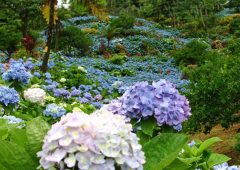 2024.05.25
2024.05.25 2024.04.26
2024.04.26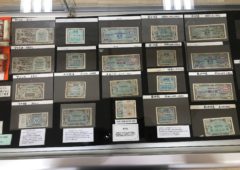 2024.04.22
2024.04.22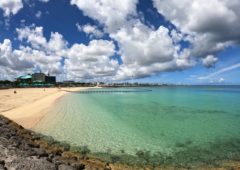 2024.04.10
2024.04.10 2024.01.31
2024.01.31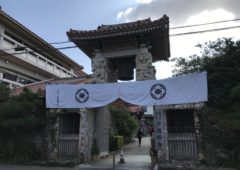 2024.01.02
2024.01.02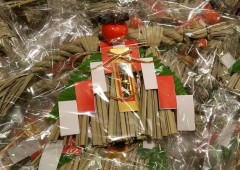 2023.12.27
2023.12.27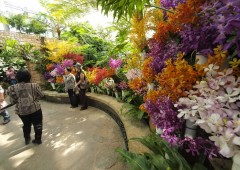 2023.11.16
2023.11.16






